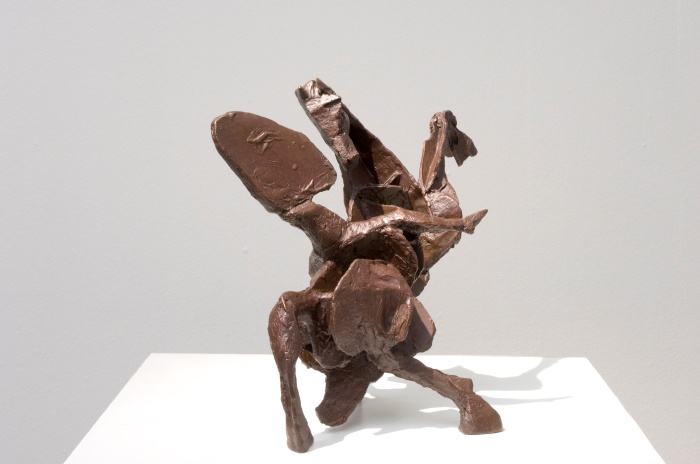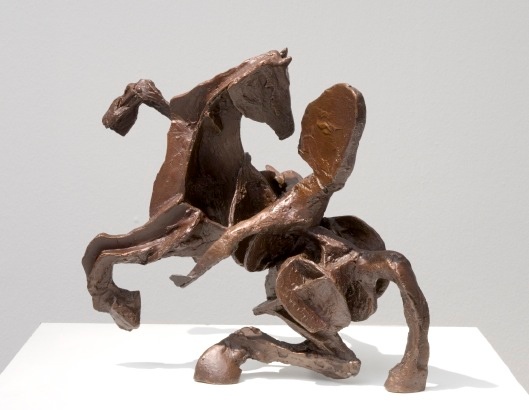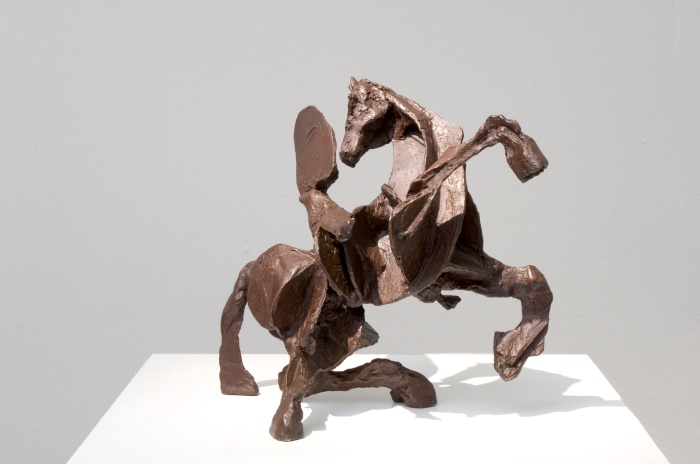William Kentridge

The curious and unexpected figure of a nose – the Nose – is borrowed from Dmitri Shostakovich’s 1930 operatic arrangement of Nikolai Gogol’s short story published in 1836. The Nose tells of a government official who wakes one morning to find his titular appendage missing. The nose, in its absence, grows in stature and becomes not only a gentleman but a State Councillor, surpassing in bureaucratic hierarchy the low-ranking officer to whom it belongs. The opera is largely considered to be both nontonal and nonlyrical; its storyline variously described as satire, parody, nonsense, and tragi-comedy. “It’s about a world gone awry, about dislocated logic and a driven irrationality where language stops making sense,” Kentridge says. “That’s very much part of the nineteen-thirties in Russia, the period of the show trials. The absurd is the only form adequate to describe that breakdown of logic and rationality.” Unsurprisingly, Shostakovich’s post-revolutionary avant-garde opera did not find favour in Stalin’s Soviet Union. Soon after the opera debuted, it was shut down – a victim of state-mandated social realism.
b.1955, Johannesburg
Performing the character of the artist working on the stage (in the world) of the studio, William Kentridge centres art-making as primary action, preoccupation, and plot. Appearing across mediums as his own best actor, he draws an autobiography in walks across pages of notebooks, megaphones shouting poetry as propaganda, making a song and dance in his studio as chief conjuror in a creative play. Looking at his work, a ceaseless output and extraordinary contribution to the South African cultural landscape, one finds a repetition of people, places and histories: the city of Johannesburg, a white stinkwood tree in the garden of his childhood home (one of two planted when he was nine years old), his father (Sir Sydney Kentridge) and mother (Felicia Kentridge), both of whom contributed greatly to the dissolution of apartheid as lawyers and activists. The Kentridge home, where the artist still lives today, was populated in his childhood by his parents’ artist friends and political collaborators, a milieu that proved formative in his ongoing engagement with world histories of expansionism and oppression throughout the 20th century. Parallel to – or rather, entangled with – these reflections is an enquiry into art historical movements, particularly those that press language to unexpected ends, such as Dada, Constructivism and Surrealism.
Moving dextrously from the particular and personal to the global political terrain, Kentridge returns to metabolise these findings in the working home of the artist’s studio, where the practitioner is staged as a public figure making visible his modes of investigation. Celebrated as a leading artist of the 21st century, Kentridge is the artistic director of operas and orchestras, from Sydney to London to Paris to New York to Cape Town, known for his collaborative way of working that prioritises thinking together with fellow practitioners skilled in their disciplines (for example, as composers, as dancers). Most often, he is someone who draws, in charcoal, in pencil and pencil crayon, in ink, the gestures and mark-making assured. In a collection of books for which A4 acted as custodian during the exhibition History on One Leg, one finds 200 publications devoted to Kentridge’s practice. In the end, he has said, the work that emerges is who you are.



